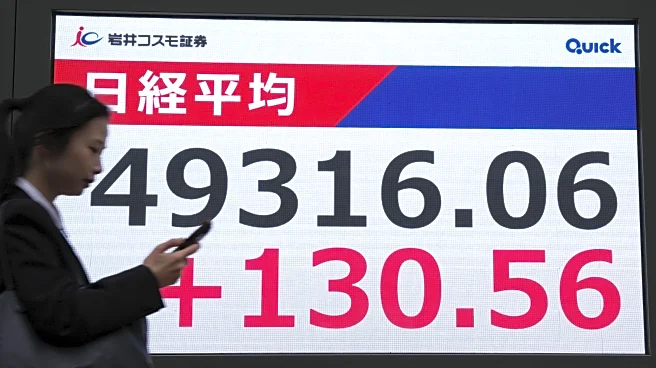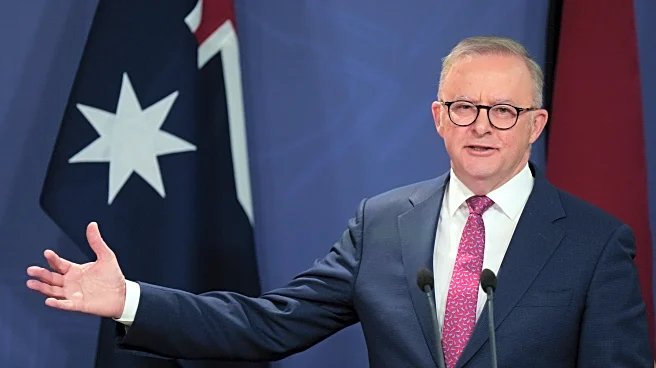What's Happening?
Gold futures opened at $4,371 per ounce on Tuesday, marking a 0.8% increase from the previous day's close. This rise in gold prices is occurring against the backdrop of heightened U.S.-China trade tensions,
particularly concerning rare earth minerals. These minerals, crucial for manufacturing computer chips, are predominantly produced by China, which has recently expanded its export restrictions. In response, President Trump has threatened new tariffs and signed a deal with Australia to secure a supply of rare earths, aiming to reduce U.S. dependency on China. Additionally, Cleveland-Cliffs, a domestic steel company, announced plans to excavate these materials, although the timeline remains uncertain. These geopolitical developments have contributed to increased demand for gold, traditionally seen as a safe-haven asset during times of economic uncertainty.
Why It's Important?
The ongoing trade tensions between the U.S. and China, particularly over rare earth minerals, have significant implications for global supply chains and economic stability. The U.S. relies heavily on these minerals for technology manufacturing, and China's control over their supply gives it substantial leverage. The recent moves by the U.S. to secure alternative sources highlight the strategic importance of these materials. The rising gold prices reflect investor concerns over these tensions and the potential for further economic disruption. For investors, gold serves as a hedge against market volatility and currency devaluation, making it an attractive option in uncertain times. The situation underscores the interconnectedness of global markets and the potential for geopolitical events to impact economic conditions worldwide.
What's Next?
As the U.S. continues to seek alternative sources for rare earth minerals, further developments in trade negotiations with China are anticipated. The outcome of these negotiations could influence future gold prices and market stability. Additionally, the U.S. may explore more partnerships with other countries to diversify its supply chain. Investors will likely keep a close watch on these geopolitical dynamics, as well as any policy changes that could affect the global trade landscape. The potential for increased tariffs or other trade barriers could further impact market conditions and investor sentiment.
Beyond the Headlines
The focus on rare earth minerals highlights broader issues of resource dependency and economic security. The U.S.'s efforts to reduce reliance on Chinese supplies may lead to increased investment in domestic mining and processing capabilities. This shift could have long-term implications for the U.S. economy, potentially creating new jobs and industries. However, it also raises environmental and regulatory challenges associated with mining activities. The situation also emphasizes the importance of international cooperation and strategic alliances in addressing global supply chain vulnerabilities.













